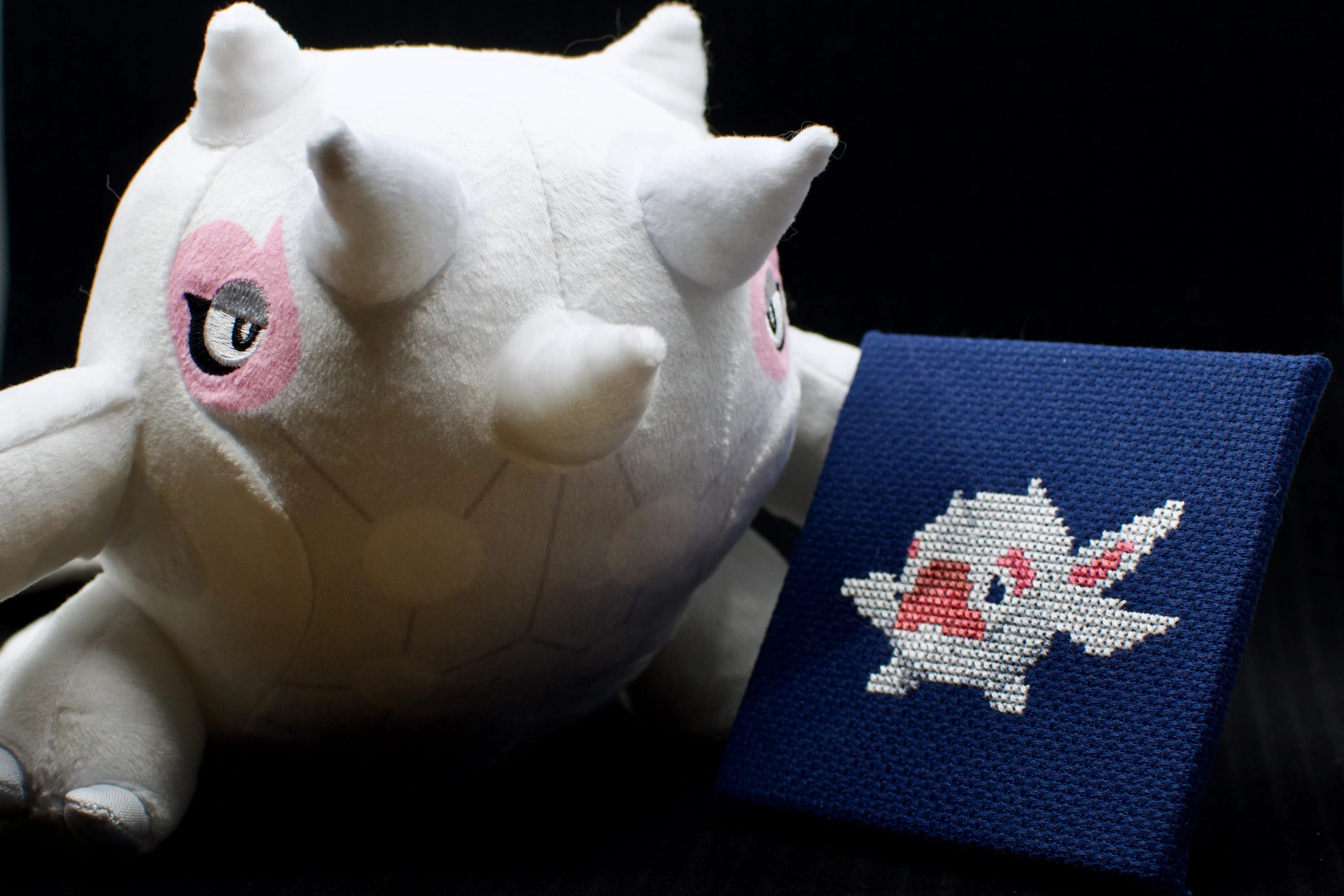
-

-
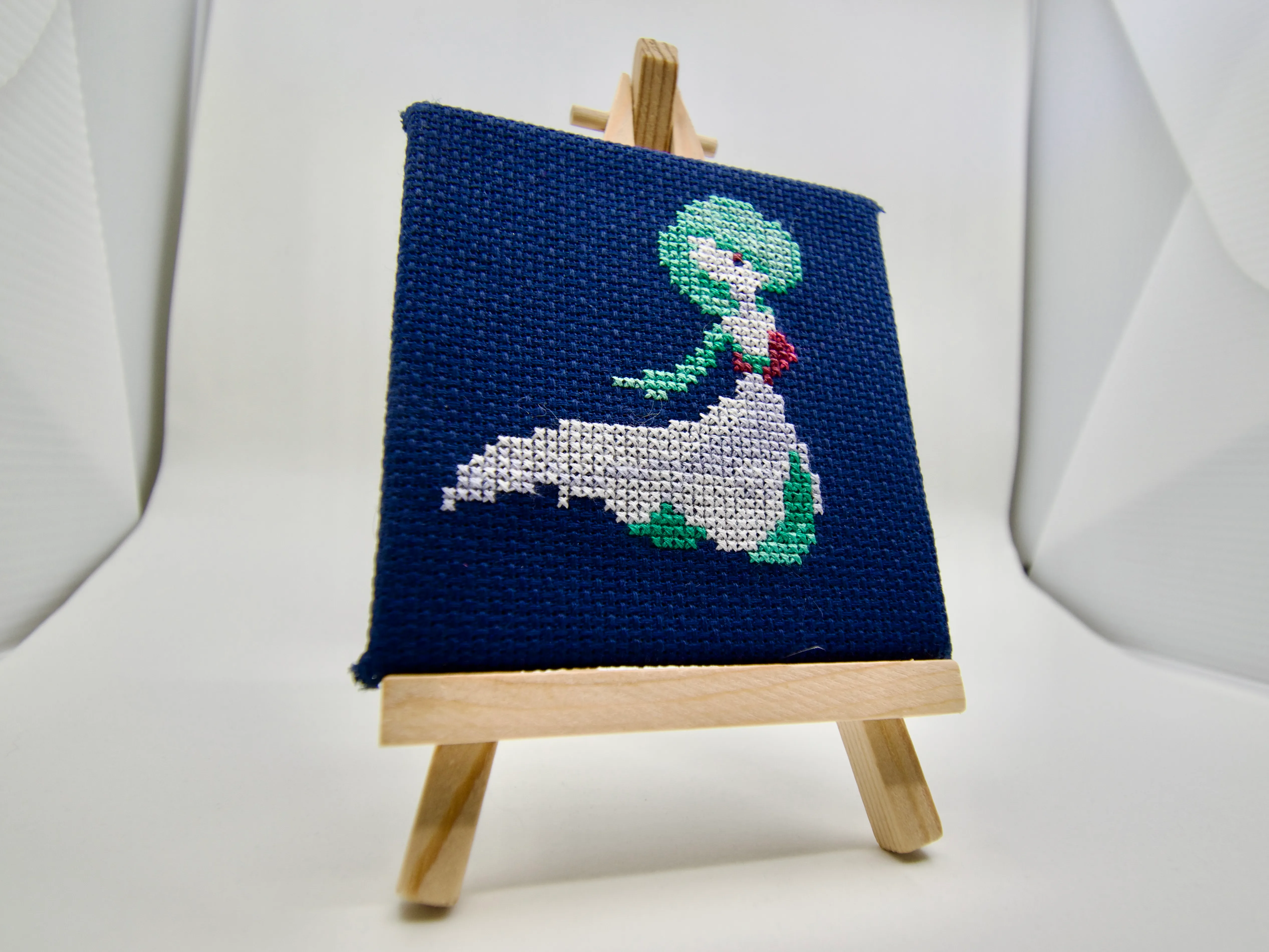
-
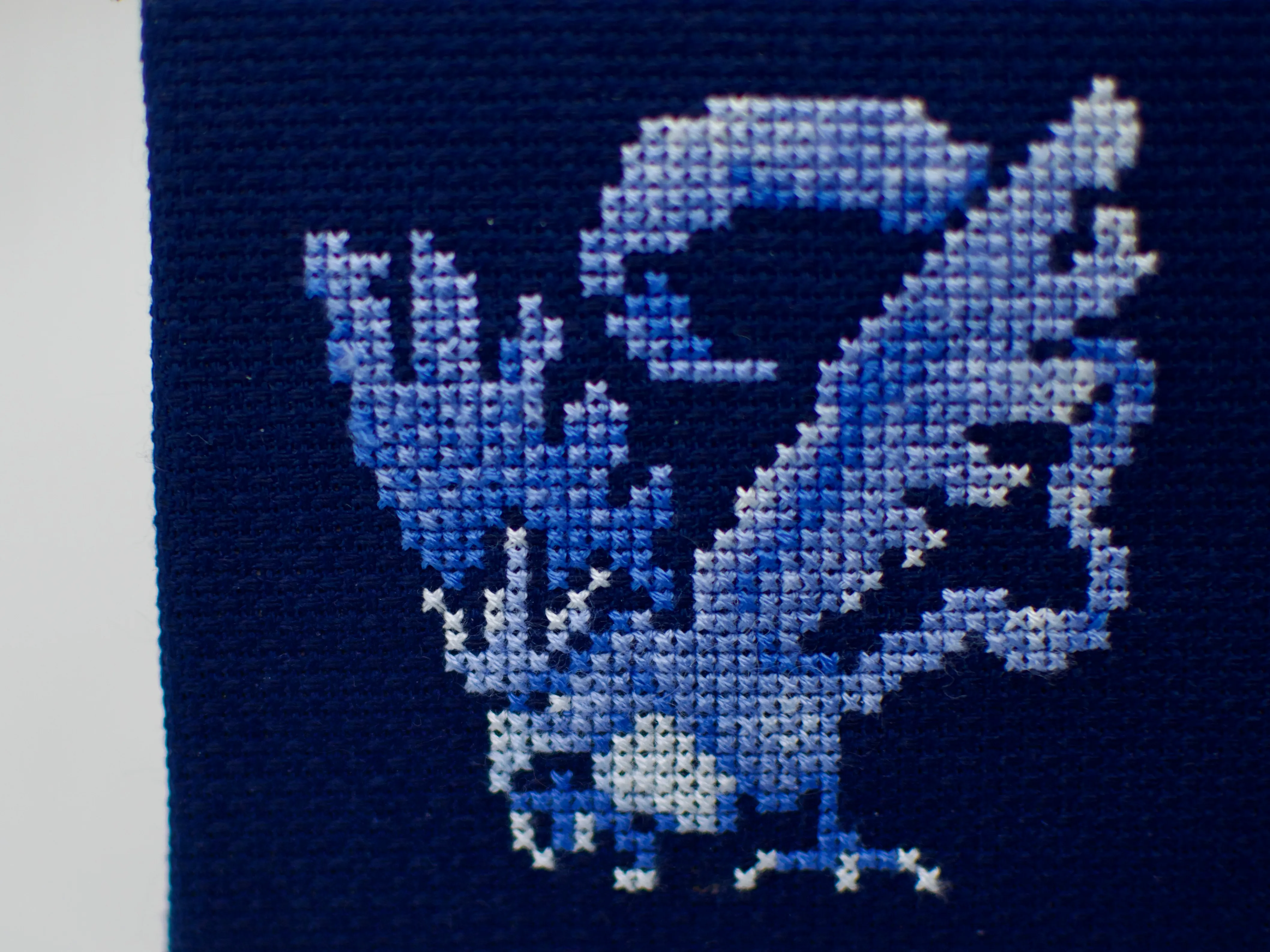
-
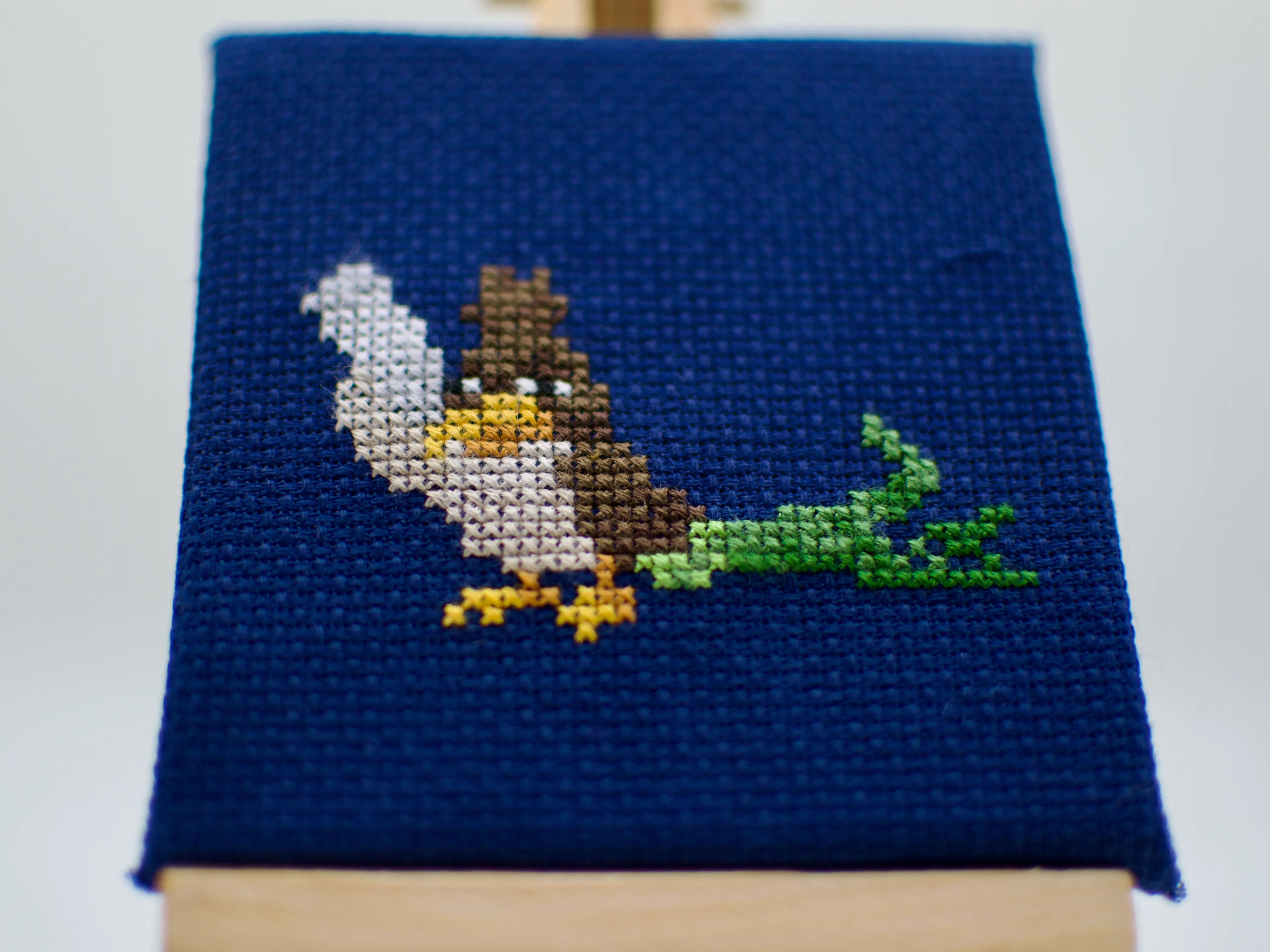
-
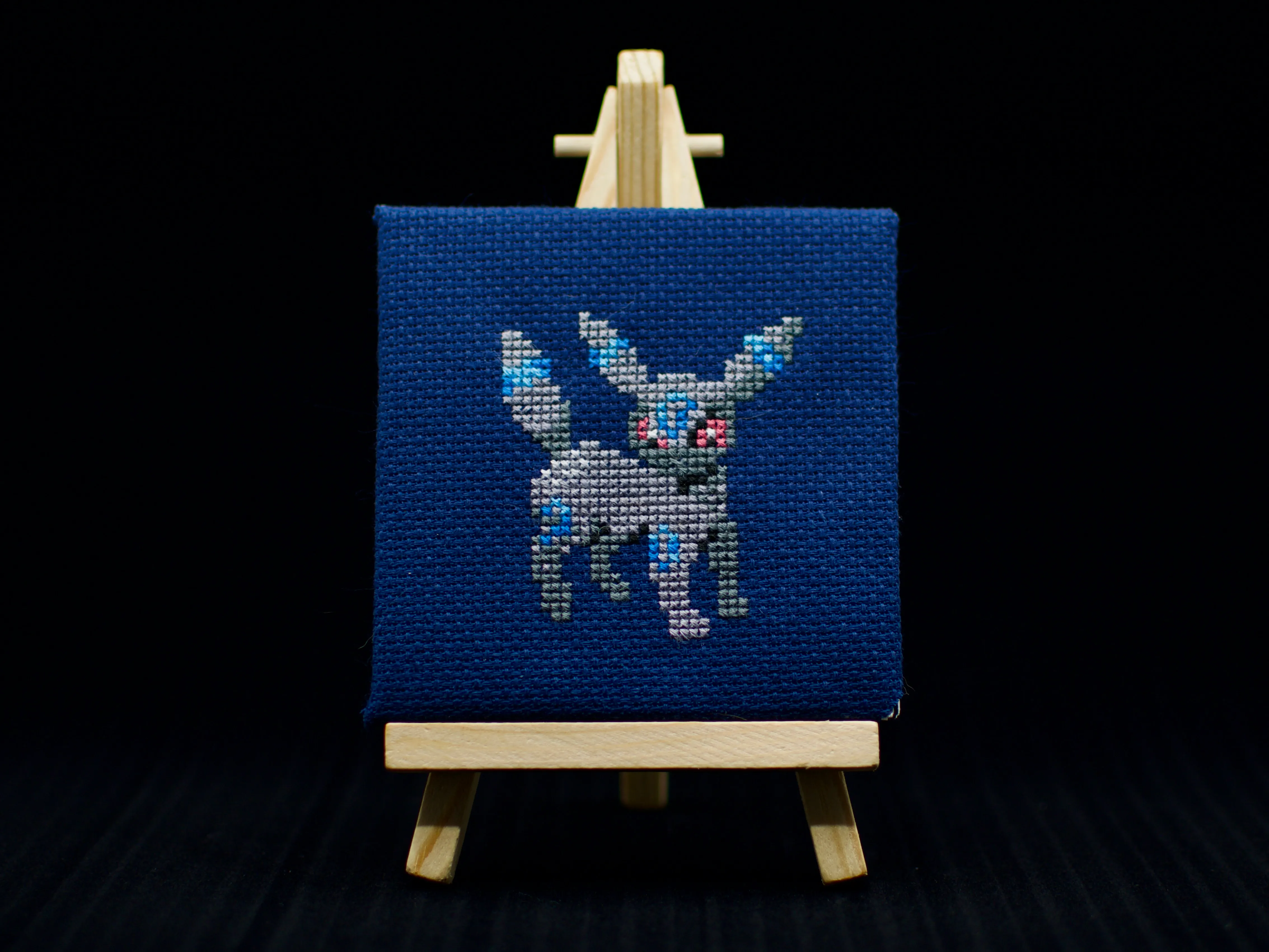
-

-
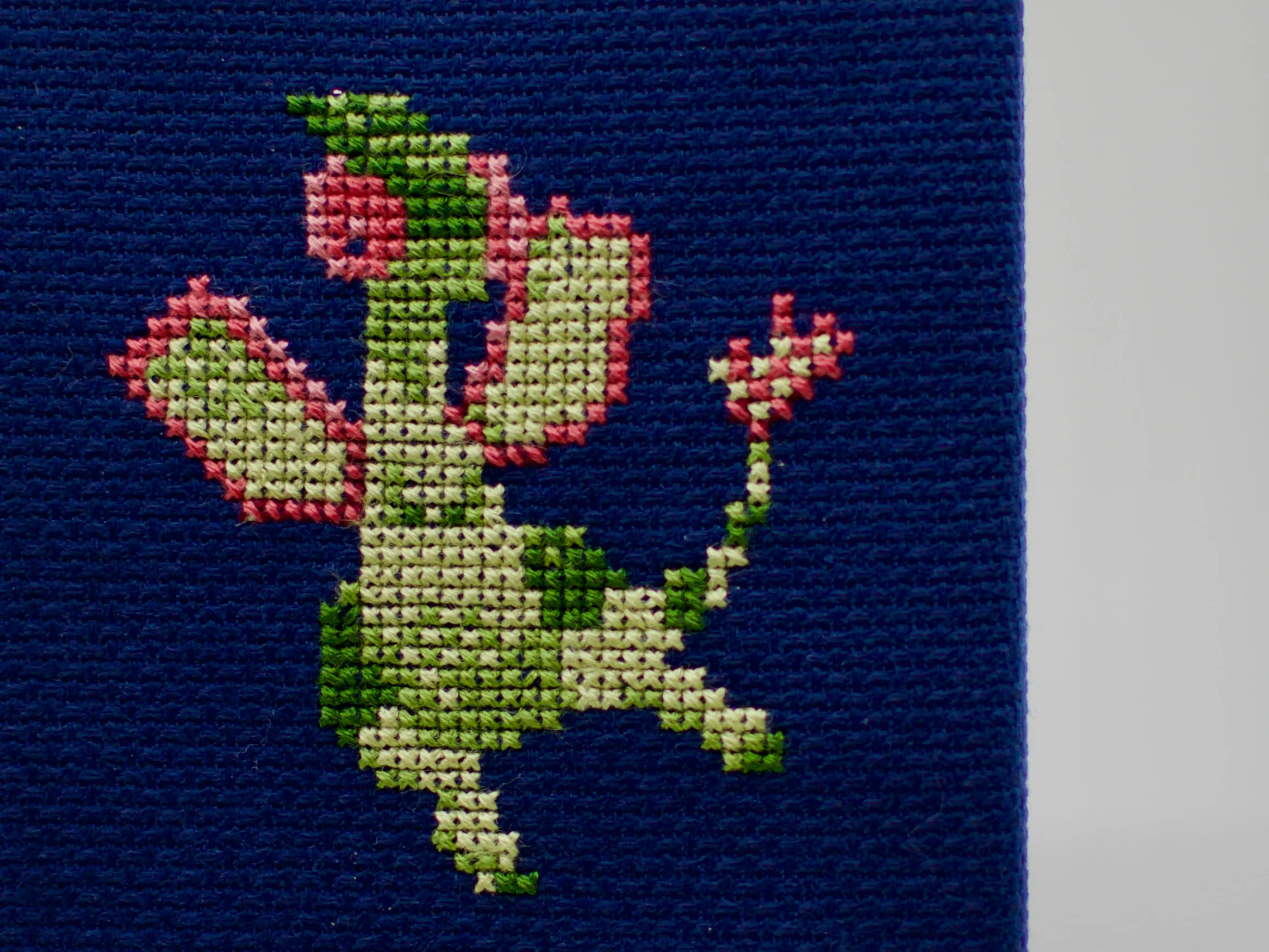
-
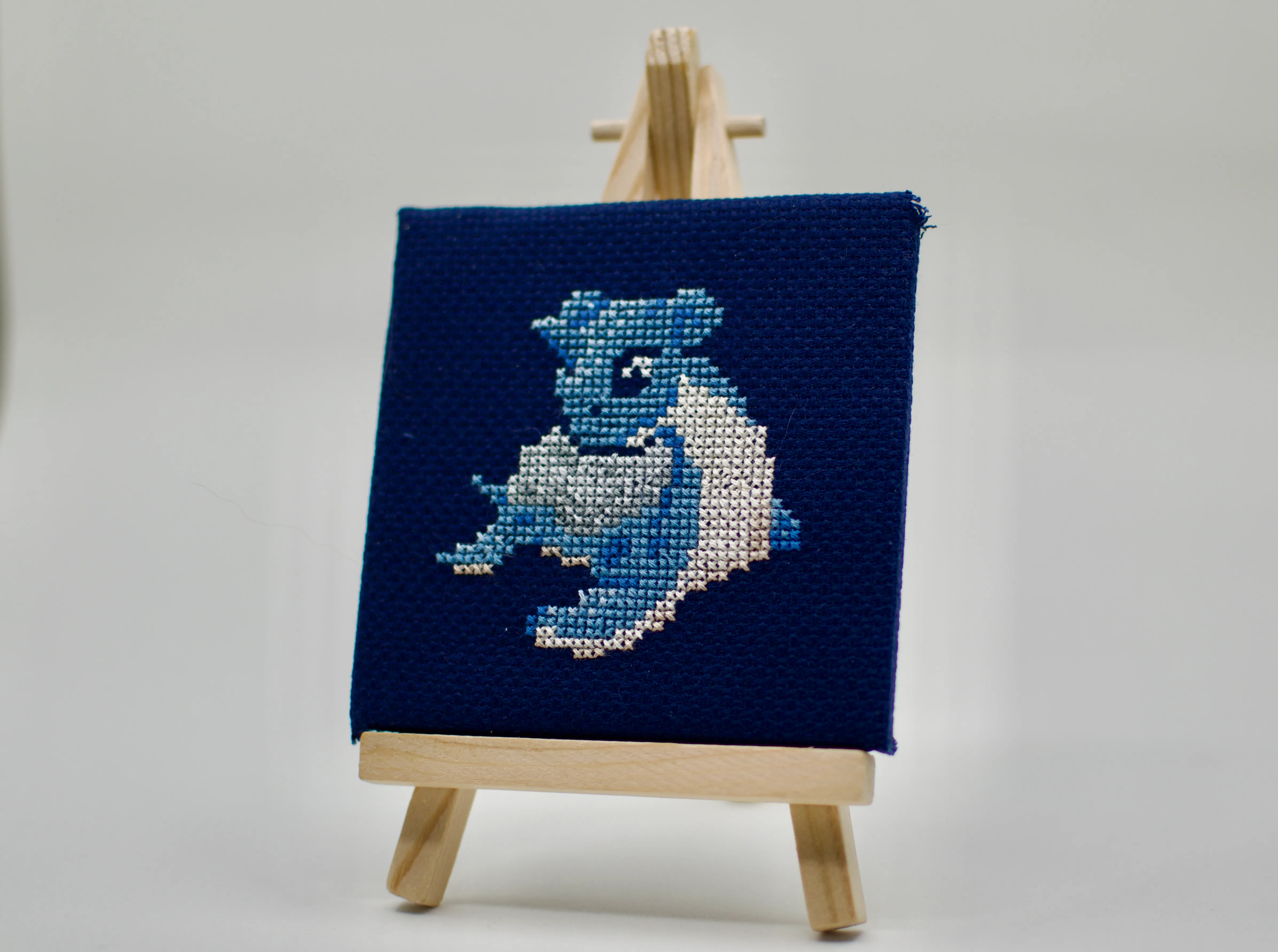
-
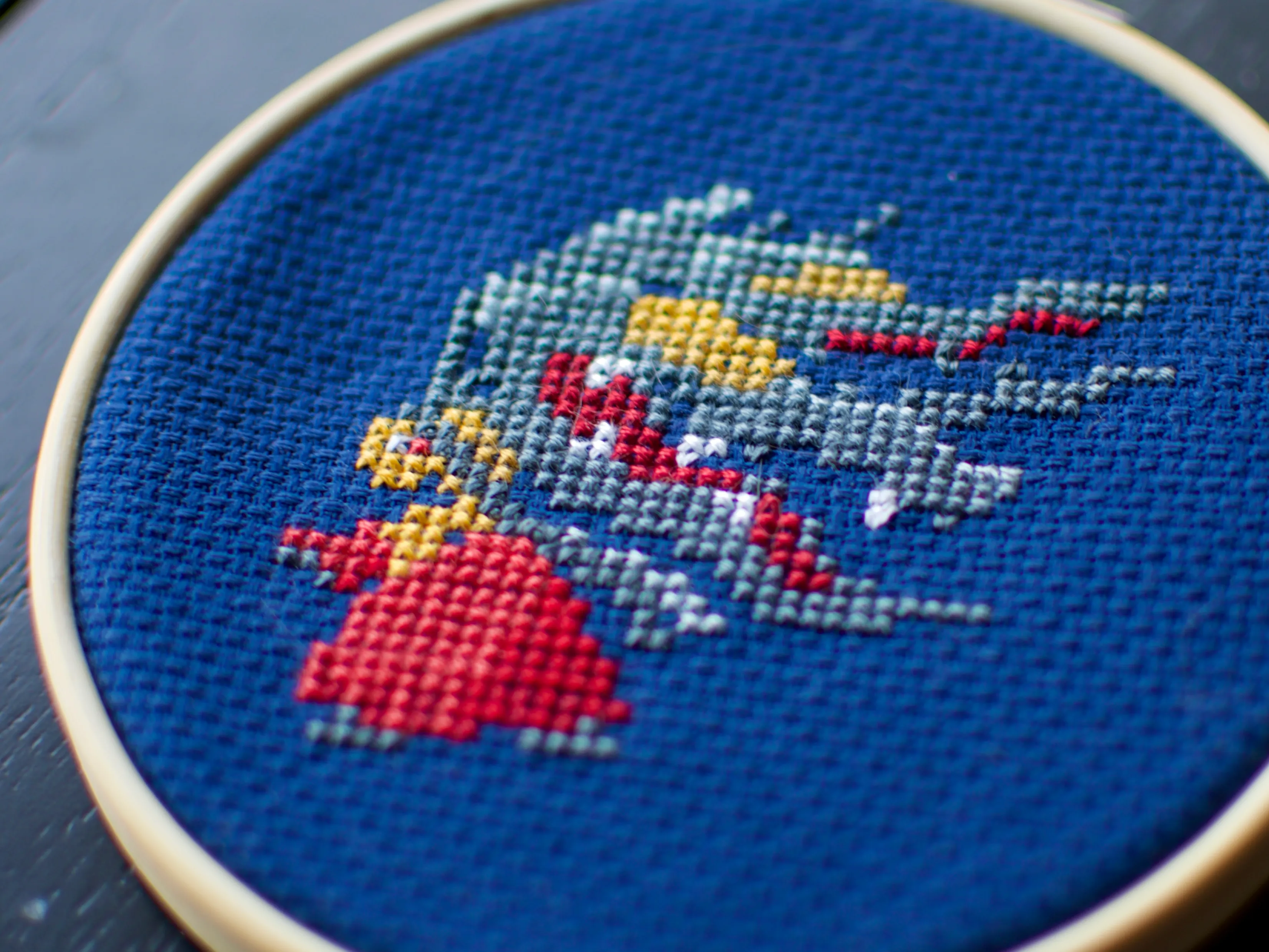
-
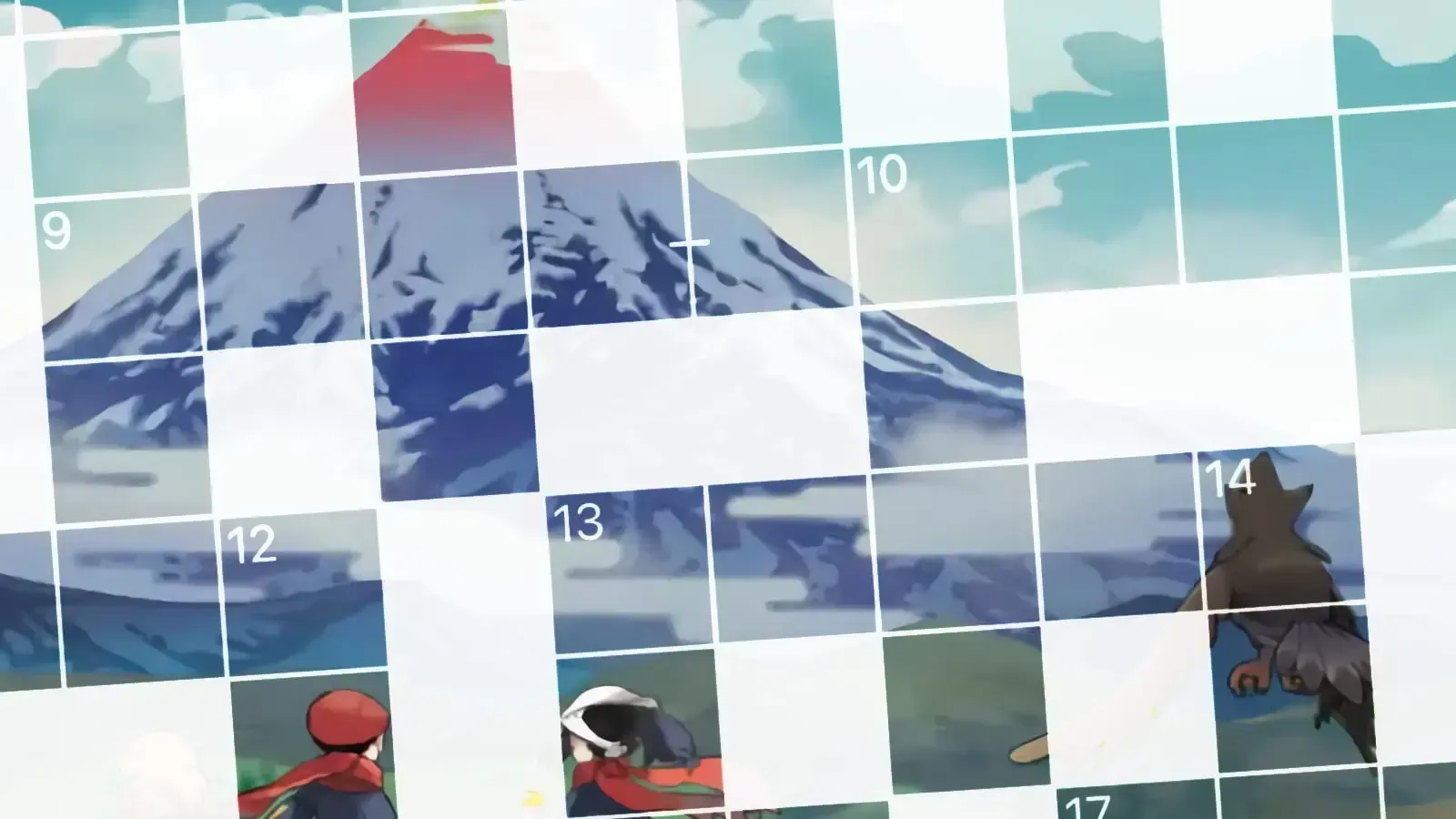
Recently I’ve been spending my spare time doing two things: solving cryptic crosswords and playing Pokémon Legends: Arceus. The next logical step, then, is to try my hand at compiling my own cryptic crossword themed after the game!
If you haven’t tried one before, a cryptic crossword is a crossword puzzle in which each clue is itself a word puzzle. A cryptic clue is usually misleading if taken at face value, but conceals a definition and a secondary indication (usually wordplay) of the correct answer. For example:
A gym leader in Cinnabar was inflamed (5)
The answer is RAGED, meaning “was inflamed”.
At first reading, it seems like this clue refers to the fiery Cinnabar Island Gym Leader Blaine from Pokémon Red and Blue, but the hidden real definition is only the last two words, “was inflamed”.
The remainder of the clue is wordplay that hints at the answer: “Cinnabar” means RED and “gym leader” can be interpreted as “the first letter of gym”, so “A gym leader in Cinnabar” reduces to “A G in RED” — hence, RAGED.
Cryptic clues can be even more complicated and include anagrams, homophones, obscure abbreviations, and all sorts of other devices. Or they can be as simple as a bad pun.
Feet passed down through generations? (7)
The answer is LEGENDS, which are “passed down through generations”. What do feet have to do with anything? Well, they’re LEG ENDS, of course…
You’ll need to be a Pokémon fan to appreciate all of the surface readings in this puzzle, but don’t worry if you aren’t — none of the clues require any specific knowledge of Pokémon to solve. Once you’re done, you can scroll to the bottom to check the solutions and see how you did. Enjoy!
ACROSS
DOWN
Confused? Impatient? In the spirit of Fifteensquared, below is the answer key to the puzzle!
As a reminder, a cryptic clue generally consists of a dictionary definition and a secondary indication (usually wordplay) of the correct answer. In the following solutions, I’ve highlighted the dictionary definition hidden in each clue in bold.
Solution Clue RAGED A gym leader in Cinnabar was inflamed (5) I’ll then explain how the rest of the clue leads to the right answer, as well as how each clue relates to the puzzle theme.
Across
7 Across
Solution Clue BARBELL Angry Bibarel destroyed one-pound weight (7) An anagram of BIBAREL after removing the letter I (“destroyed one”), plus L (“pound”). The anagram indicator is “angry”.
Bibarel is a Pokémon in Pokémon Legends: Arceus.

8 Across
Solution Clue AILMENT Received draught intended for negative condition (7) A homophone of ale meant (“draught intended”). The homophone indicator is “received”.
The surface reading suggests an item like a Full Restore used in the Pokémon games to cure status conditions. The British spelling of draught/draft is partly in service of the surface reading; the influence of Harry Potter has made it more common in Canadian and American English when referring to potions and elixirs like those used in Pokémon.
9 Across
Solution Clue GOOD-NATURED Jolly well suited ultimately to go after flora and fauna (4-7) Breaks down into GOOD (“well”), and D (“suited ultimately”, meaning the last letter of suited) after NATURE (“flora and fauna”).
Natures in Pokémon are characteristics that increase one stat at the expense of another stat. “Jolly” is a good nature to have for certain Pokémon on a competitive team.
11 Across
Solution Clue KIND Type disadvantage primarily follows lineage (4) The letter D (“disadvantage primarily”, meaning the first letter of disadvantage) following KIN (“lineage”).
Pokémon types have strengths and weaknesses against each other; for example water-types are good against fire-types and ground-types are not effective against flying-types. Because Pokémon evolutionary lineages tend to share types, they also tend to share their type advantages and disadvantages.
13 Across
Solution Clue ALPHA Dominant peak of area (5) A charade of ALP (“peak”) and HA (“area”)
The surface reading suggests Mount Coronet, the dominant geographical feature of Hisui. The answer references Alpha Pokémon, larger- and stronger-than-normal Pokémon that serve as minibosses in Pokémon Legends: Arceus.

15 Across
Solution Clue GRIT Stony resolve (4) Pun on two definitions of grit.
Similar puns are present in Pokémon Legends: Arceus, as the items Grit Dust, Grit Gravel, Grit Pebble, and Grit Rock are used to raise Pokémon’s effort levels in a given stat.
16 Across
Solution Clue NOTCHES Cuts tumblestone to catch child? (7) An anagram of STONE surrounding (“catching”) the letters CH (abbreviating “child”). The anagram indicator is “tumble” although, as the question mark acknowledges, it’s slightly dubious to need to split apart a compound word in a cryptic clue.
A tumblestone is a raw material used when crafting Poké Balls to catch Pokémon with.
17 Across
Solution Clue AMNESIA Memory loss means a name is confused (7) An anagram of A NAME IS. The anagram indicator is “confused”.
The character Ingo in Pokémon Legends: Arceus suffers from amnesia after being transported through time and space from the Unova region.
19 Across
Solution Clue WARY Cautious of battle decision (4) A charade of WAR (“battle”) and Y (abbreviating yes, a “decision”).
Trainer battles in Pokémon Legends: Arceus end with a stylized wordmark reading “Battle decided”.
21 Across
Solution Clue START Spookiest artifact conceals origin (5) Concealed in spookieST ARTifact.
Three artifacts — the Adamant Crystal, Lustrous Globe, and Griseous Core — are used to change the legendary Pokémon Dialga, Palkia, and Giratina into their Origin Formes. Of these, the one associated with the Ghost-type Giratina is probably the spookiest.
22 Across
Solution Clue EPEE Sword repeats point about Pokémon starter (4) The letter E (“point”, as in the compass point east) repeated three times on either side of (“about”) P (“Pokémon starter”, meaning the first letter of Pokémon).
26 Across
Solution Clue CRYSTAL BALL Lustrous Globe (7,4) Cryptic definition — “Lustrous Globe” is just a funny way of saying “crystal ball”.
As mentioned above, the Lustrous Globe is a key item associated with the legendary Pokémon Palkia.
29 Across
Solution Clue EDITION Version exclusives? To begin with, supplement lacks announcement (7) The letter E (“exclusive to begin with”, meaning the first letter of exclusive), then ADDITION (“supplement”) lacking the first two letters AD (meaning “announcement”).
Historically, Pokémon games have been released in groups of slightly different versions, such as Pokémon Red and Blue, Pokémon Gold and Silver, and Pokémon Diamond and Pearl. The primary difference between versions in the same generation are Pokémon that can be caught in one game but not the other; these Pokémon are referred to as version exclusives. Pokémon Legends: Arceus is somewhat unique in that it is not paired with a second version (or supplementary DLC), so there are no version exclusives getting in the way of catching ‘em all.
30 Across
Solution Clue PHONIER Phione evolution rumour: tip is more fraudulent (7) An anagram of PHIONE, then R (“rumour tip” meaning the first letter of rumour). The anagram indicator is “evolution”.
Phione is a semi-mythical Pokémon which can be bred from, but strangely does not evolve into, Manaphy. False rumours and urban legends were common in the early days of Pokémon before reliable and comprehensive sources of information developed on the internet.
Down
1 Down
Solution Clue ARAGON A dragon without a leader makes historic country (6) The letter “A” is directly lifted from the clue, then DRAGON minus the first letter (“without a leader”). Aragon was a medieval kingdom that unified with Castile to form modern Spain.
Pokémon Legends: Arceus takes place in Hisui, a region loosely based on 19th-century Hokkaido. According to in-game legend, it was created by Arceus alongside the deities of time and space — which are revealed to actually be powerful Dragon-type Pokémon.
2 Down
Solution Clue RECON Another trick for gathering information? (5) Pun — if a trick is a con, is the second time you do it a re-con?
The ultimate goal of Pokémon Legends: Arceus is to perform research tasks to collect information on all the Pokémon, which are compiled into the Pokédex.
3 Down
Solution Clue CLAN Family heads to calm lightning-affected nobles (4) Formed from the first letters of (“heads to”) Calm Lightning-Affected Nobles.
In the Pokémon Legends storyline, five “noble Pokémon” have become frenzied due to lightning-like energy from space-time rifts. The heads of the Diamond and Pearl Clans help you calm these nobles by providing you necessary items to set up boss battles.
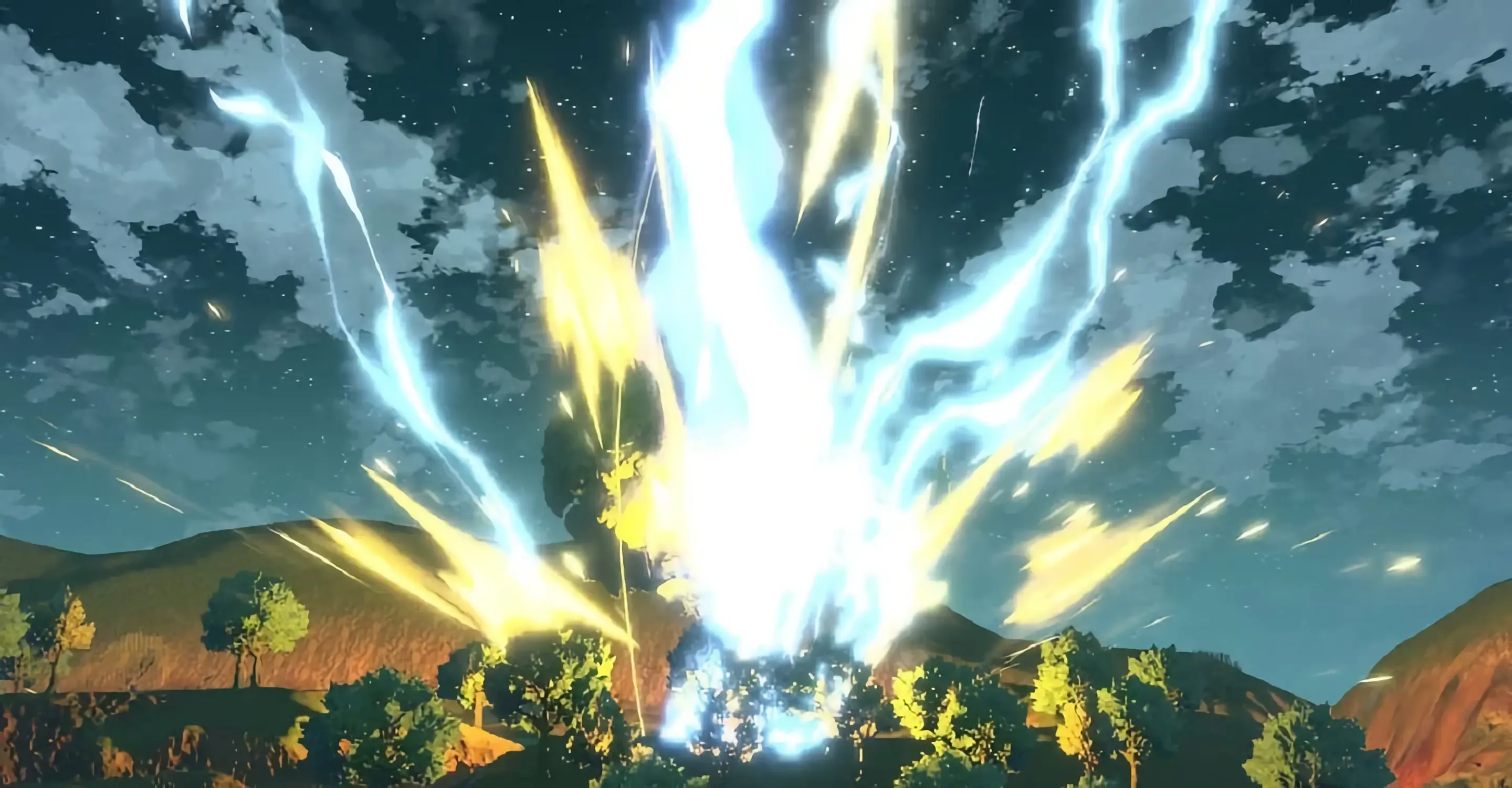
4 Down
Solution Clue EAST Beasts short of coasts where the sun rises (4) Obtained from BEASTS by taking away the first and last letter (“coasts”).
The sun rises in the Cobalt Coastlands, so the “beasts” could refer to Purrloin, Murkrow, or the other Pokémon found in the approach to the shoreline.
5 Down
Solution Clue ULTRA Greater part of beautiful tradition (5) Hidden (“part of”) beautifUL TRAdition.
The Ultra Ball is an improved version of the Poké Ball used for catching Pokémon.
6 Down
Solution Clue SENDER One who posts mission in southeast river (6) Constructed from END (in the sense of goal or “mission”) inside the letters SE (“southeast”) and followed by the abbreviation R (“river”).
The surface reading could refer to Arezu or any of the NPCs who request your help in the Crimson Mirelands surrounding the rivers in southeast Hisui.
7 Down
Solution Clue BLACK AND WHITE Sharply divided about old-fashioned graphics (5,3,5) Double definition; can refer to moral lines or early TV.
The clue references the controversy over Pokémon Legends: Arceus’s somewhat dated-looking visuals. The answer references the fifth-generation games Pokémon Black and White.
9 Down
Solution Clue 9d TIME TRAVELLER Anagram of RARE ITEM TO LEVEL, after removing (“disregarding”) the letter O (“zero”) and one of the Es (short for “electricity”). The anagram indicator is “crafts”.
The main character in Pokémon Legends: Arceus is a time traveller, having fallen through a space-time rift to a world of the past. Item crafting is a mechanic in the game, although admittedly rare candies that raise a Pokémon’s level are not craftable.
10 Down
Solution Clue AMPS Current maps inaccurate (4) Anagram of MAPS. The anagram indicator is “inaccurate”. Amps are a measure of electric current.
Because Pokémon Legends: Arceus takes place in the past, “current” maps of the Sinnoh region only vaguely resemble the regions depicted in the game.
12 Down
Solution Clue DECOY Distraction from the last month expressing dismay (5) Charade of DEC (the “last month” of the year) and OY (“expressing dismay”).
As mentioned in my introduction, I’ve been using Pokémon Legends: Arceus and cryptic crosswords like this one as a distraction from recent events.
13 Down
Solution Clue ABETS Everyone entering STAB moves helps (5) The letter E (abbreviating “everyone”) in the middle (“entering”) of an anagram of STAB. The anagram indicator is “moves”.
In competitive Pokémon, STAB stands for same-type attack bonus, referring to the 1.5x damage boost moves get when used by a Pokémon of the same type. All else being equal, it’s better to use a STAB move than a non-STAB move, which helps when trying to predict what options an opposing trainer might select on their turn.
14 Down
Solution Clue ADMIT Random rifts drop odd characters to accept (5) Obtained by deleting the odd-numbered characters of rAnDoM rIfTs.
The surface reading references the randomly-occurring space-time rifts that bring the main character (and others) to the setting of Pokémon Legends: Arceus. The main character briefly struggles to gain the acceptance of the people in Jubilife Village.
15 Down
Solution Clue GEESE Birds glide vacantly around — look up! (5) The letters GE (“glide vacantly”, meaning glide with its middle letters removed) set around SEE (“look”) spelled backwards (“up”, since this is a vertical clue).
The inclusion of ride Pokémon in Pokémon Legends: Arceus allows you to glide around, vacantly or otherwise, with the help of the flying-type Braviary.
18 Down
Solution Clue DATA Information vaguely written up (4) The phrase A TAD (“vaguely” when used adverbially, as in a tad familiar), spelled backwards (“written up”, since this is a vertical clue).
The Pokédex is notoriously filled with vague and occasionally dubious descriptions that resemble Pliny the Elder’s writings more than it does a modern encyclopedia. The Pokédex in Pokémon Legends: Arceus is literally written up as a book.
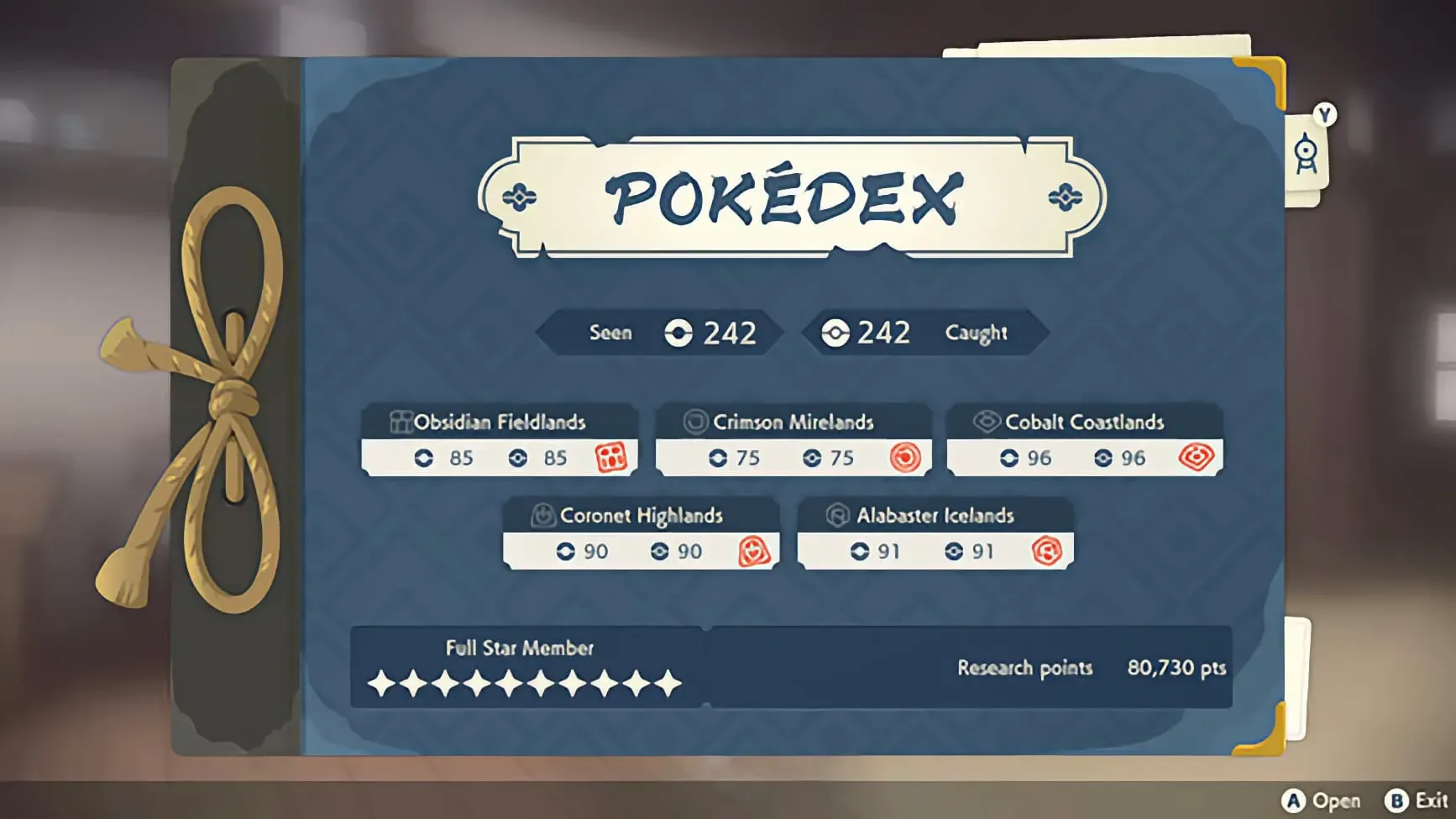
20 Down
Solution Clue RECOIL Concerning loop leading to self-inflicted damage (6) A charade of the abbreviation RE: (“concerning”) and COIL (“loop”).
Several moves in Pokémon inflict recoil damage on the user. On the rare occasion when a battle devolves into a repetitive loop of healing and status moves, one of the combatants will eventually run out of available moves and use Struggle, which is one such move.
23 Down
Solution Clue PALLID Friend cap lacks intensity (6) A charade of PAL (“friend”) and LID (“cap”).
This clue is a stretch to relate to Pokémon, but “friend cap” could be interpreted as referring to the limit of 6 Pokémon you can carry with you at a time. This limit feels less stringent than it does in other games, since it is easy to switch them out at the camps scattered across the region.
24 Down
Solution Clue KYRIE Sacred words from the end of legendary shield-bearer (5) The end of valKYRIE. The Kyrie eleison is the common name of an important prayer in some Christian denominations.
The surface clue is suggestive of the legendary Zamazenta, the cover mascot of Pokémon Shield.
25 Down
Solution Clue TALON No getting up after taking half of Metal Claw (5) NO spelled backwards (“getting up”, since this is a vertical clue) after the latter half of meTAL.
The surface clue references the Pokémon attack Metal Claw.
27 Down
Solution Clue TING Metallic noise and lossless glint? Variant! (4) Anagram of GLINT after removing L (standing for “loss”, so “lossless” suggests its removal). The anagram indicator is “variant”.
Shiny Pokémon are rare variants with unusual colours. When a Shiny Pokémon appears in the wild or from its Poké Ball, it is accompanied by a sound effect and a flash of light and stars.
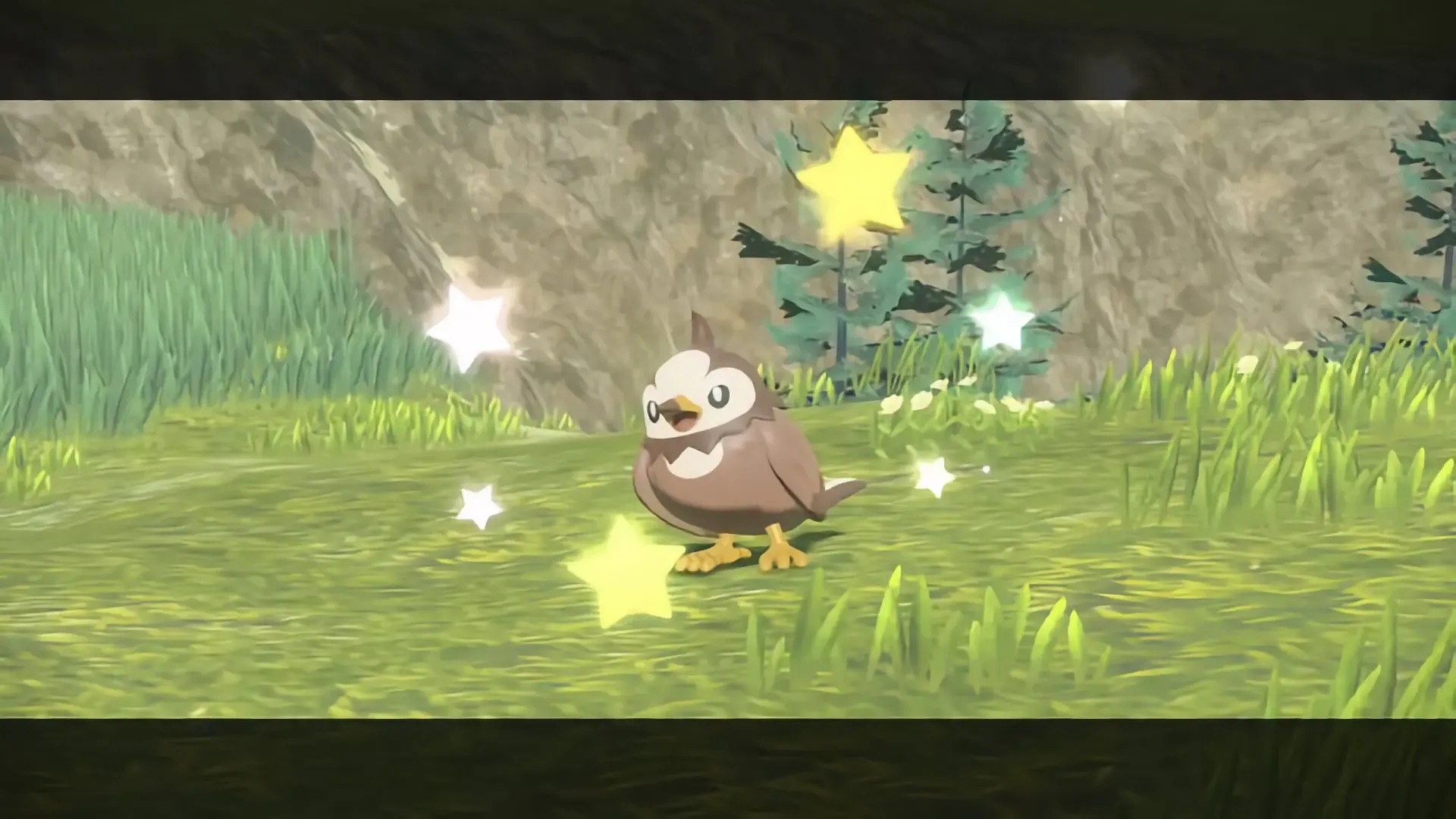
28 Down
Solution Clue LOPE Run from training under large officer (4) The initialism PE (“training”, as in physical education) after (“under”, since this is a vertical clue) the letters L (short for “large”) and O (short for “officer”).
The surface clue refers to Zisu, the captain of the Galaxy Team Security Corps, who can be optionally battled at the training grounds.
Hidden message
Hidden message
Eagle-eyed solvers may notice the thematic message spelled out by the top and bottom rows of the puzzle: ARCEUS LEGEND.
-

-
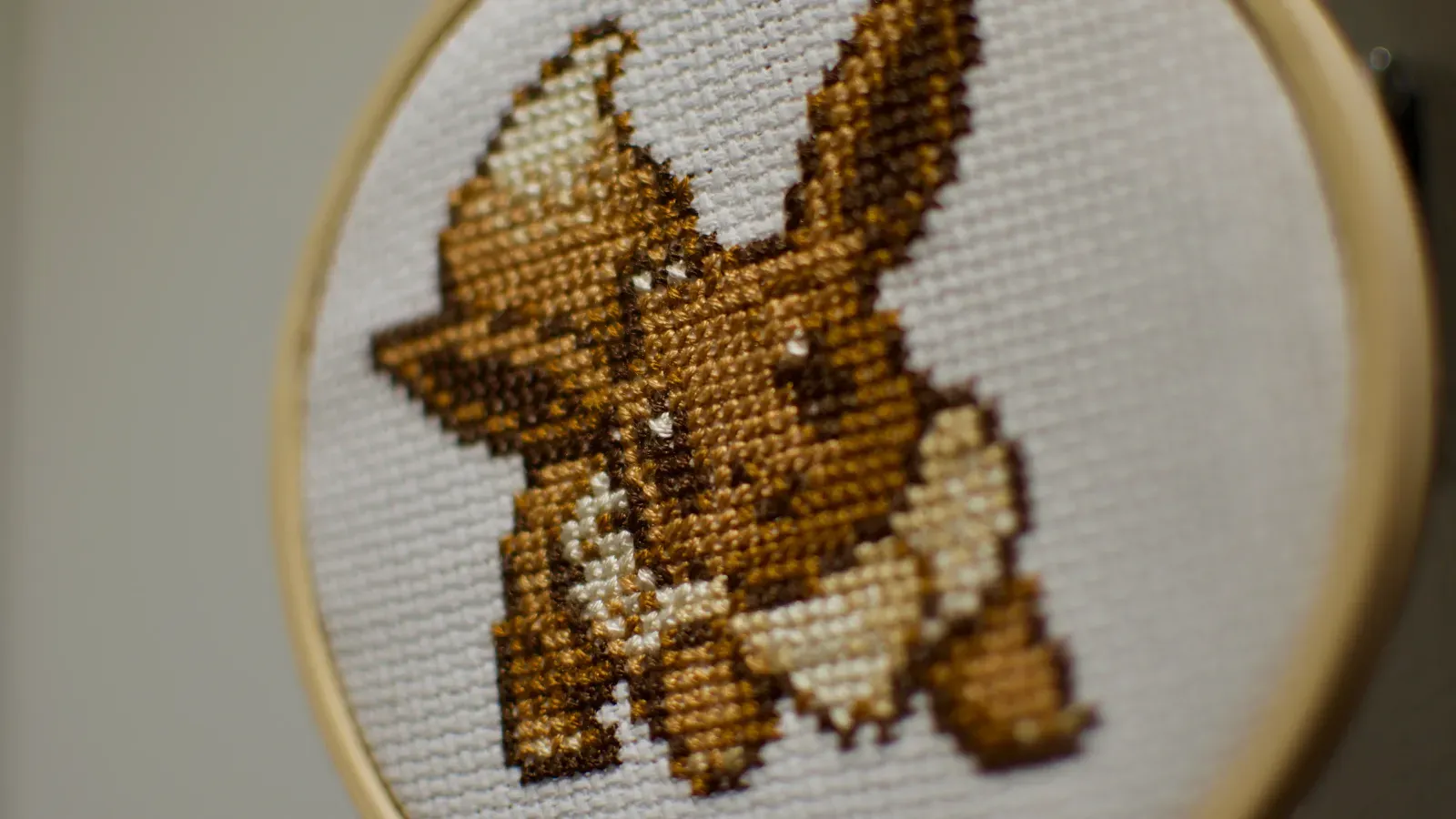
-
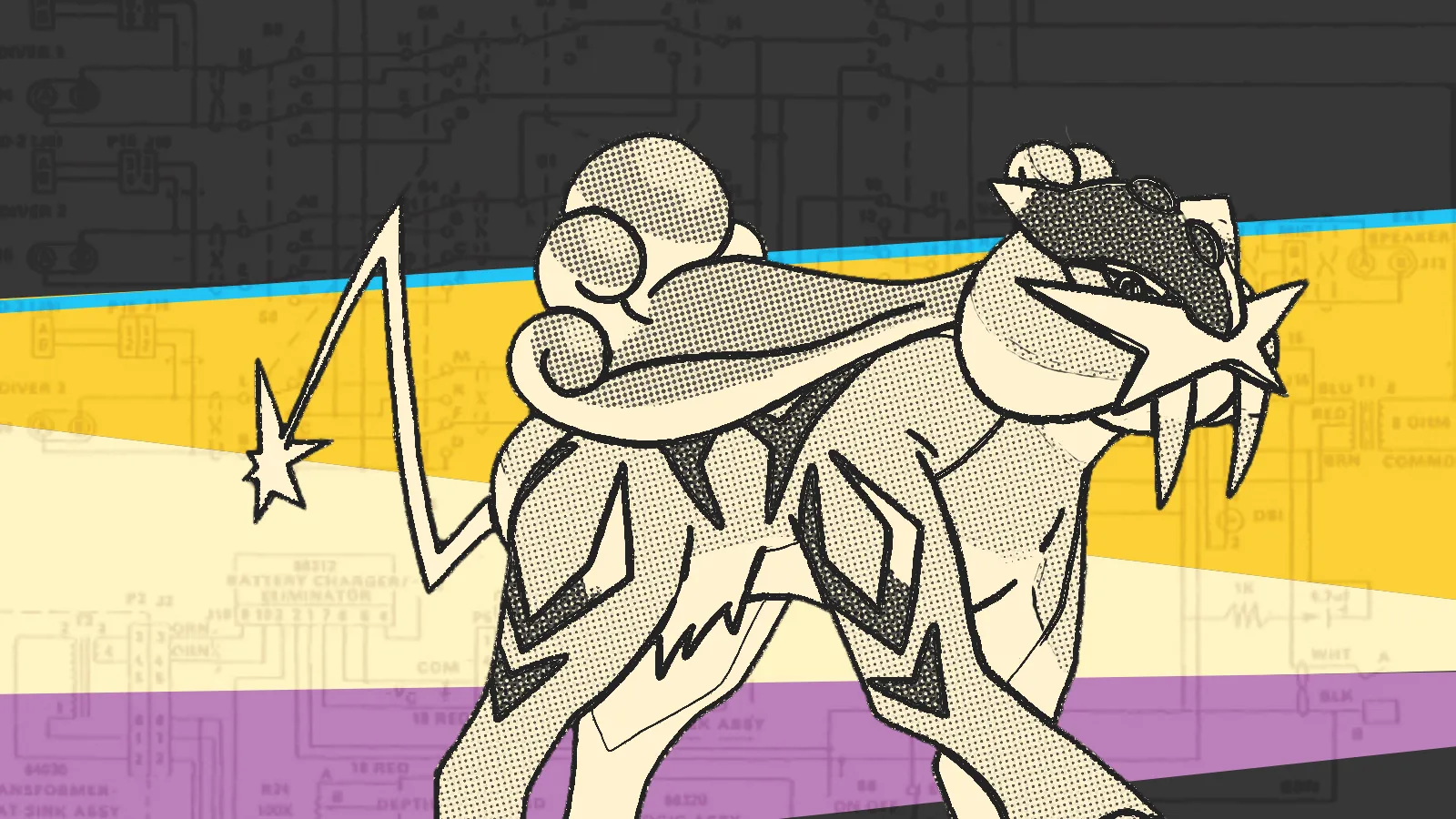
Pokémon Gold and Silver’s roaming legendary beasts move randomly from route to route instead of sticking to a fixed habitat. By analyzing their behaviour using the math of random walks on graphs, I can finally answer a question that’s bugged me since childhood: what’s the best strategy to find a roaming Pokémon as quickly as possible?
Catching a roaming Pokémon is a graph pursuit game, but in practice the optimal strategy doesn’t involve a chase at all. Raikou and the other roaming Pokémon move every time the player crosses the boundary from one location to another, regardless of how long that takes. So if we repeatedly cross the boundary by taking one step forward and one step back, Raikou will effortlessly speed across the map.
The easiest strategy, then, is to choose a centrally-located location and hop back and forth until Raikou comes to us. The question is what location gives the best results.
Vertices of maximum degree
When left to its own devices, a random walk in a graph G returns to a vertex v every
steps. This suggests that the best place to find Raikou is a vertex of maximum degree on the graph corresponding to the Johto map.
The routes of Johto coloured according to their corresponding vertex degrees.
This puts Johto Route 31 as the top candidate, since it’s the only route adjacent to five other routes (Routes 30, 32, 36, 45, and 46) on the roaming Pokémon’s trajectory.
Vertices with minimum average effective resistance
Of course, we don’t intend to leave Raikou to its own devices—we’re going to try to catch it whenever it’s on our route! If it gets away, it will flee to a random location that can be anywhere on the map, regardless of whether it is adjacent or not. This wrinkle means we’re not exactly trying to find the vertex with the fastest return time; we’re really trying to minimize
where is the expected time for a random walk starting at to first reach our vertex .
How do we compute this value? According to Tetali, we replace all of the edges with 1-ohm resistors and measure the effective resistances between each pair of nodes in the corresponding electrical network. Then
It seems very appropriate to use the math of electrical networks to catch the electric-type Raikou! Unfortunately, there’s no references to effective resistance or Tetali’s formula in its Pokédex entry.
Effective resistance can be computed by hand using Kirchoff’s and Ohm’s Laws, but it’s much easier to plug it into SageMath, which uses a nifty formula based on the Laplacian matrix of the graph.1
Expected capture time when moving between a given route and an adjacent town
Route 31 comes out on top again by this measure: if Raikou starts from a random location, it will come to this route sooner on average than any other single location.
Vertex pairs with minimum average effective resistance
But this still isn’t the final answer. The above calculations assume we’re hopping between a route (where we can catch Raikou) and a town (where we can’t).1 What if we go to a boundary where either side gives us a chance for an encounter?
There are only four pairs of routes in Johto where this is possible. The expected capture time when straddling one of these special boundaries can be computed using the same kinds of calculations. All four route pairs yield an expected capture time faster than relying on any individual route — enough to dethrone Route 31!
Expected capture time when moving between adjacent locations. Each pair has two expected capture times, shown in different shades, depending on which route is considered the starting point.
Source code
Source code
G = Graph({ 29: [30, 46], 30: [31], 31: [32, 36, 45, 46], 32: [33, 36], 33: [34], 34: [35], 35: [36], 36: [37], 37: [38, 42], 38: [39, 42], 42: [43, 44], 43: [44], 44: [45], 45: [46] })R_matrix = G.effective_resistance_matrix()def R(u, v): return R_matrix[G.vertices().index(u)][G.vertices().index(v)]def hitting*time(u, v): return 1/2 * sum(G.degree(w) \_ (R(u,v) + R(v,w) - R(u,w)) for w in G.vertices())def avg_hitting_time(v): return mean([hitting_time(u, v) for u in G.vertices()]){ v: avg_hitting_time(v) for v in G.vertices() }# account for parityH = G.tensor_product(graphs.CompleteGraph(2)) R_matrix = H.effective_resistance_matrix()def R(u, v): return R_matrix[H.vertices().index(u)][H.vertices().index(v)]def hitting*time(u, v): return 1/2 * sum(H.degree(w) \_ (R(u,v) + R(v,w) - R(u,w)) for w in H.vertices())def avg_hitting_time(v): return mean([hitting_time((u,0),(v,0)) for u in G.vertices()]){ v: avg_hitting_time(v) for v in G.vertices() }# Final@CachedFunction def H(routes=None): if routes is None: return G.tensor_product(graphs.CompleteGraph(2)) else: x, y = routes graph = H(None).copy() graph.merge_vertices([(x, 0), (y, 1)]) return graph@CachedFunction def R_matrix(routes): return H(routes).effective_resistance_matrix()def hitting*time(routes, u, v): H0 = H(routes) R = lambda x,y: R_matrix(routes)[H0.vertices().index(x)][H0.vertices().index(y)] return 1/2 * sum(H0.degree(w) \_ (R(u,v) + R(v,w) - R(u,w)) for w in H0.vertices()){ (x, y): mean([ hitting_time((x,y), (u,0), (x,0)) for u in G.vertices() ]) for (x, y) in [(30,31), (31,30), (35,36), (36,35), (36,37), (37,36), (45,46), (46,45)] }Although Raikou will on average arrive at Route 31 faster than any other route, the best place to catch the roaming legendary Pokémon is the boundary between Johto Routes 36 and 37. Hop back and forth between those two routes, and before you know it, you’ll be one step closer to completing your Pokédex!
-
Specifically, the calculations were done on the tensor product of K2 and the graph representing Raikou’s possible moves between the Johto routes.
-
-
Urban planning oddities in Pokémon:
- Kanto Route 17: because a steep hill is the perfect place for a Cycling Road.
- Cave lighting and sliding block puzzles are an essential part of a transportation network.
- Hospital-adjacent land is considered prime real estate.
- Thirsty guards are a major source of traffic bottlenecks.
- A nonprofit society needing funding convinced Lavender Town council to rezone their memorial tower for radio use.
-
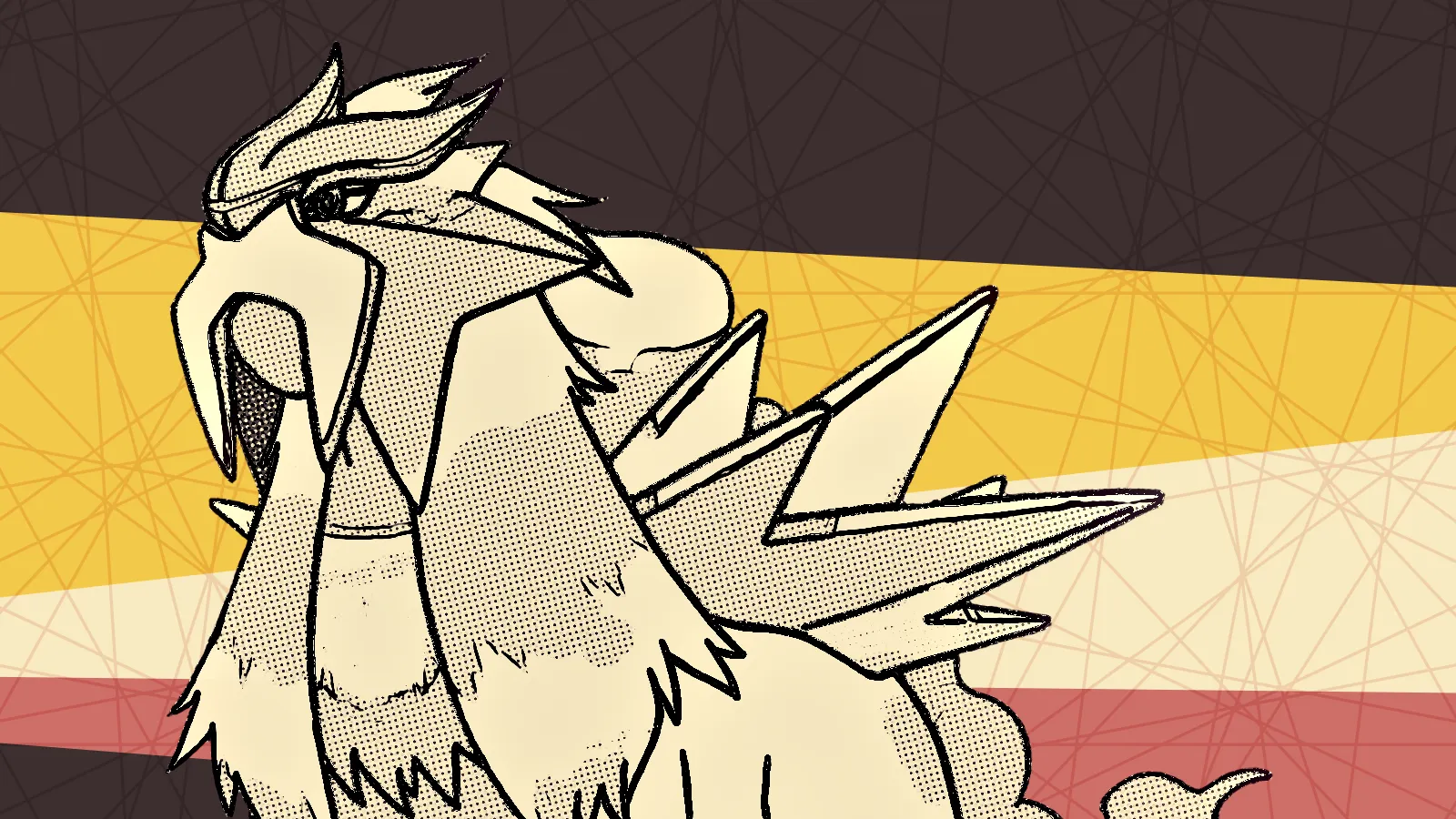
Pokémon Gold and Silver introduced the roaming legendary beasts: three one-of-a-kind Pokémon that move from route to route instead of sticking to a fixed habitat. Catching a roaming Pokémon amounts to winning a graph pursuit game — so what can we learn about it from the latest mathematical results?
To review the Pokémon mechanics, each species can normally be found in a handful of fixed habitats. If you want to catch Abra, you go to Route 24; if you’re looking for Jigglypuff, head to Route 46.

Jigglypuff can always be found on Route 46.
The legendary Entei, Raikou, and Suicune1 are different. There’s only one of each species, each situated on a random route. Each time the player character moves to a new location, the roaming Pokémon each move to a randomly-selected route adjacent to the one they were just on. In graph theory terms, the player and Pokémon are engaged in a pursuit game where the Pokémon’s strategy follows a random walk.
The study of graph pursuit games is a fascinating and active area of research. Classically, researchers have asked how many “cops” it takes to guarantee the capture of an evasive “robber” travelling around a graph. Depending on the graph, many cops might be needed to catch a clever robber; there is a deep open problem about the worst-case cop numbers of large graphs.
Because the graph corresponding to the Pokémon region of Johto contains a long cycle as an isometric subgraph, its cop number is more than one — in other words, it’s possible that a roaming Pokémon could theoretically evade a lone Pokémon trainer forever! Fortunately, the legendary beasts play randomly, not perfectly, so the worst-case scenario doesn’t apply.
A random walk in an arbitrary -vertex, -edge graph can be expected to spend of its time at each location , and to visit the whole graph after at most roughly steps. So any trainer who isn’t actively trying to avoid Entei should end up bumping into it eventually — and an intelligent trainer should be able to do much better.
The first place to start is the “greedy” strategy I originally tried as a kid: every time Entei moves, check the map, and move to any route that gets me closer to them. After Entei makes its random move, the distance between us could be unchanged (with Entei’s move offsetting mine), or it could go down by one, or it could go down by two in the lucky chance that Entei moves towards me. If I start at a distance of steps away from Entei and get lucky times, I’ll have caught up — so using a negative binomial distribution bound,
In the grand scheme of things, this isn’t too bad — especially if is low. But it still takes a frustratingly large time for a 12-year-old, and in general it’s possible to do better.
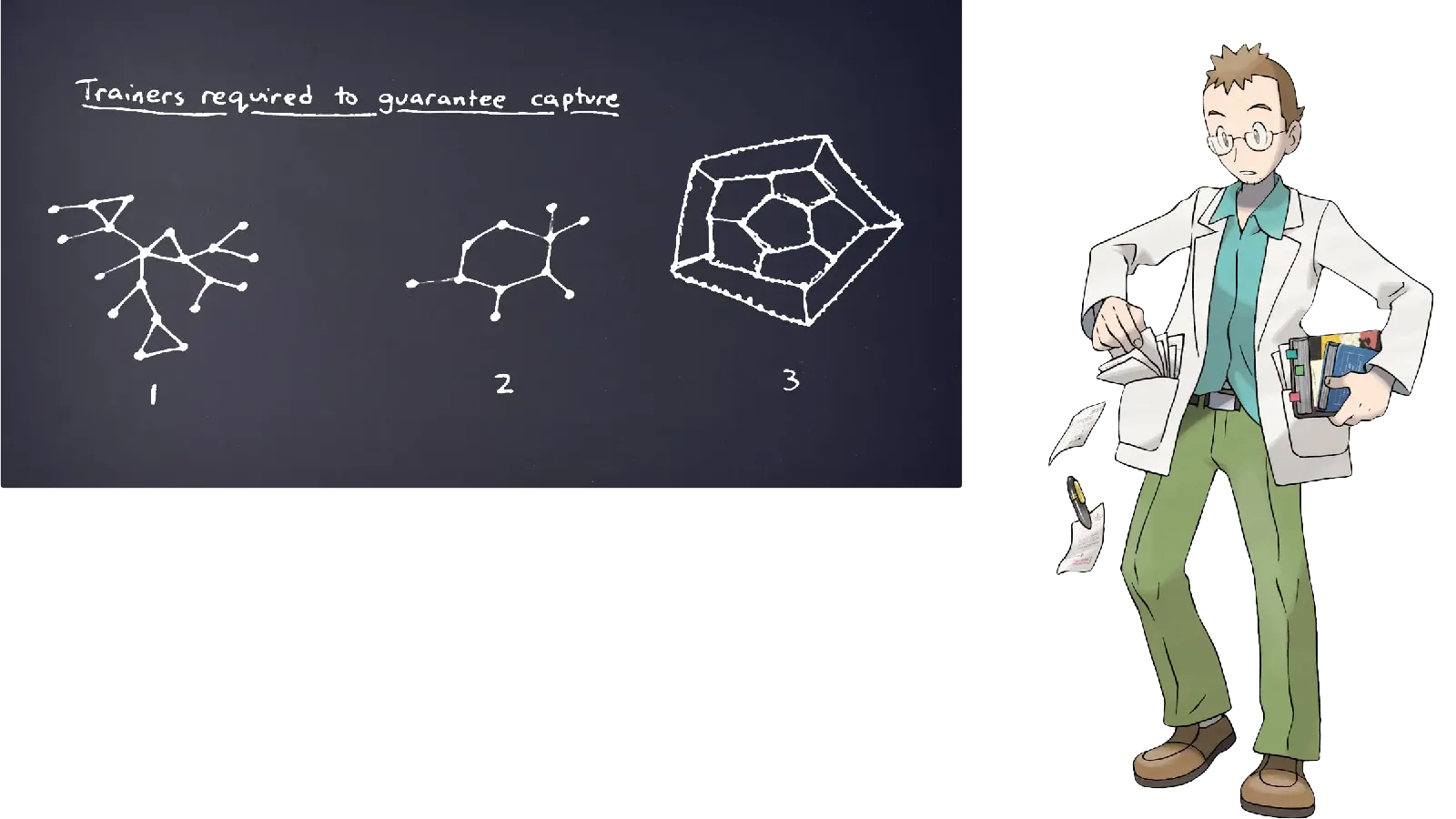
Professor Elm ponders some results and conjectures about graph pursuit games.
Recently, Peter Winkler and Natasha Komarov found a strategy for general graphs which gives a better bound on the expected capture time. Somewhat counterintuitively, it involves aiming for where the robber was — rather than their current location — until the cop is very close to catching him. The Komarov-Winkler strategy has an expected capture time of , where is the number of locations on the map. This is essentially best possible on certain graphs, and is better than the above bound when the graph has vertices with large degree.
For graphs without high-degree vertices — like the Pokémon world map — it is possible that a simpler solution could beat the Komarov–Winkler strategy. The problem is: simpler strategies may not be simpler to analyse. In her PhD thesis, Natasha wondered whether a greedy algorithm with random tiebreakers could guarantee expected capture time. It is an open question to find a general bound for the “randomly greedy” strategy’s expected performance that would prove her right.
-
I’m including Suicune in this list since it roamed in the original Gold and Silver, but its behaviour is different from the others in Pokémon Crystal, HeartGold, and SoulSilver.
-